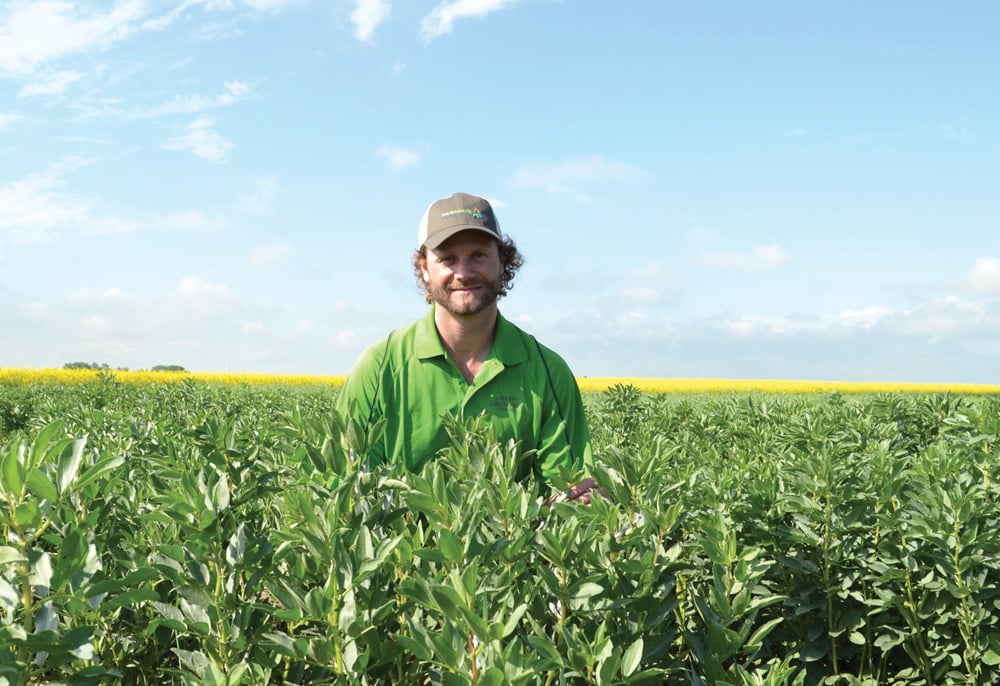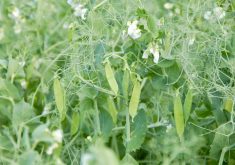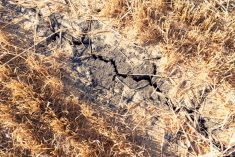With Alberta lentil acres more than doubling in 2016, this fall will be the first-ever lentil harvest for a good number of growers.
The trick to doing it successfully? Patience, said Nevin Rosaasen, policy and program specialist with Alberta Pulse Growers.
“Harvesting lentils can be tricky, and you need to be patient,” said Rosaasen. “Lentils pod up very close to the ground, and they are one of the more challenging crops to harvest. Just like a pea crop, they can be difficult to pick up.
“Most producers who are seasoned lentil growers will be using flex headers to help with contouring of the ground.”
Read Also

Volunteers help exotic animal farm rebuild
Exotic animal farm loses beloved camel and pony to huge hail storm that gripped the Brooks, Alta. area as a community member starts a fundraiser to help the family recover from the financial and emotional damage.
It can also be difficult to tell when the lentils are actually ready for harvest, said provincial crop specialist Neil Whatley.
“Lentils are different from other crops. With other crops, you can look from the road and say, ‘OK, that looks like it’s ready,’” said Whatley. “But lentils stay green. The indication for being ready to desiccate is that the lower pods rattle when shaken.
“What I generally do is walk up into the crop, grab the top of the crop, and shake it. If you hear some rattling, get down and take a look.”
- Read more: Pulses’ popularity points to bright future
When to start checking if the lentils are ready to desiccate depends on your seeding date, said Whatley, adding producers should check with their buyers about maximum residue limits on any desiccants they plan to use.
“If you seeded the beginning of May, you want to start looking the first of August and look for the next two weeks,” he said.
“Some people seeded later, so it will be a little later than that. It’s about a 95-day crop.”
Because lentils have an indeterminate growth period, producers need to “compromise” by harvesting the high-yielding pods at the bottom of the plant when they’re ready, even if the top of the plant is still growing.
“Even when these bottom and middle pods are ready, you may continue to see a little bit of flowering going on because of the indeterminate growth,” he said. “But you want to prevent shattering, so you don’t want to leave it too late.”
Because of the possibility of shattering, safe storage of lentils is between 13 to 14 per cent moisture content, but take the crop off at a higher moisture level if possible, said Whatley.
“If you take this crop and thresh it at 14 per cent moisture content, you can get some seed chipping and you’ll definitely get some shattering of those lower riper pods,” he said. “It’s good to take this crop off at 16 to 17 per cent moisture content, put it on air, and bring it down to 14 per cent.”
Marketing
There’s a “learning curve” when it comes to marketing lentils as well, added Rosaasen.
“Hindsight is always 20/20, so I hope producers are locked in at 42 cents a pound. But for those who aren’t, the best thing to do is to try to stay up to date and current on what’s happening in other parts of the world, specifically in India with their monsoon season,” he said.
“In lentils, we see market price can move 20 cents a pound during the season, though 10 cents is more likely. So you can take advantage of some of those opportunities when bid prices are higher in the November peak shipping period.”
But one of the “largest caveats” with this year’s increased acreage is the potential for a drop in quality, he said.
“It’s been wet all across the Prairies, especially during key growing periods. We’ve seen a lot of disease pressure and waterlogging of soils, and that’s been detrimental to the lentil plants. They don’t like water,” he said.
“In a wet year such as we’ve seen, it’s not a great year for lentils. With the large amount of rainfall, it’s doubtful that they’ll grade up at a 1 or a 2.
“But we’ll see. Let’s keep our fingers crossed because they do show promise.”















